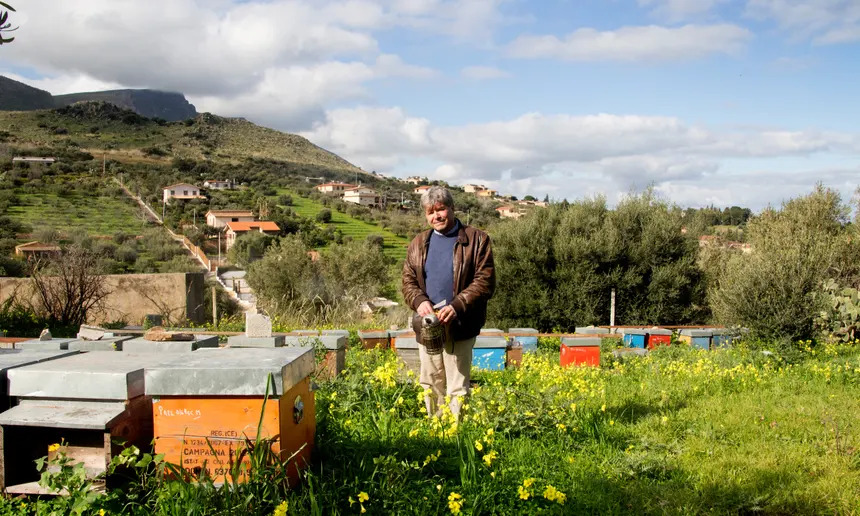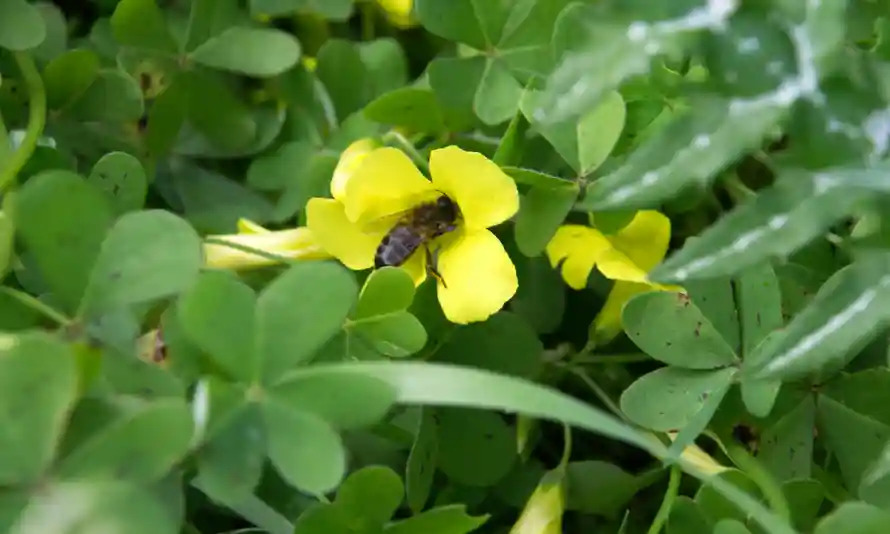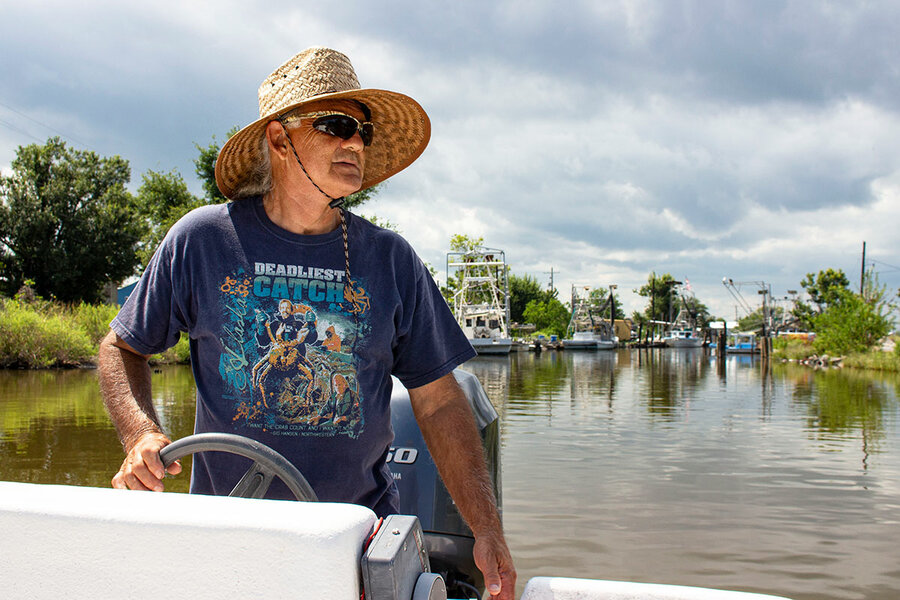Original publication by Monica Pelliccia for theguardian.com on 14 April 2022
Carlo Amodeo fell in love with Sicilian black bees after being mesmerised by them as a child. He has spent more than 40 years finding and preserving them

Photograph: Monica Pelliccia
It was love at first sight when five-year-old Carlo Amodeo first saw a swarm of black bees. He could not stop thinking about them and every night for a week he had the same dream: of building a house for the bees made from wood using his toy carpentry set.
Amodeo, now 62, still remembers that first encounter. It took place in the 1960s, while he was spending the summer with his mother at the seaside 30 minutes from Palermo, in north-west Sicily. He saw the swarm hanging from an olive trunk during a stroll in the countryside. “I was paralysed, motionless like a dog pointing at prey,” he recalls. “Then my mother dragged me off to the beach.”

Photograph: Monica Pelliccia
Today, Amodeo has been a beekeeper for more than 40 years. And though he never built that bee house, he has been instrumental in helping the recovery of the Sicilian black bee (Apis mellifera siciliana), along with Palermo University and researchers.
The global threats to bee survival are well-known: pesticides, the climate crisis, monoculture and diseases. But it was hybridisation that brought Sicilian black bees close to extinction in the 1970s.
“Moving bee subspecies to different territories has strong consequences: hybridisation erodes natural diversity and weakens them,” says Cecilia Costa, a honeybee expert and researcher at Italy’s Council for Agricultural Research and Economics (Crea). “Each honeybee population has a positive adaptation to its native environment that gives it better survival capacity and more favourable apicultural characteristics.”
Carlo Amodeo
“The black bees give me so much. I dream of seeing bees flying around without the risk of being poisoned”
In Sicily, when commercial beekeeping intensified in the 1970s, the Italian peninsula bee (Apis mellifera ligustica) was massively imported from northern Italy. “At that time, most of the Sicilian beekeepers were still practising traditional apiculture with beehives built from the stalks of the giant fennel plant [Ferula thyrsifolia], unable to respond to the growing market demand,” says Costa. Crossbreeding with local Sicilian black bees started.
Raffaella Ponzio of the Slow Food Foundation for Biodiversity says: “Often, local subspecies worldwide get lost in favour of more productive breeding, as happened in Sicily. But their conservation is essential to maintain the ecosystem balance.” The organisation, supported by the University of Palermo, created a committee to safeguard Sicilian black bees with eight professional beekeepers, including Amodeo.
Currently, there are more than 250 beekeepers taking care of Sicilian black bees along the western part of the island, as far away as possible from crops sprayed with pesticides. But it was a long journey to reach this point.
In 1985, Amodeo was an agricultural sciences student at the University of Palermo, where he met entomology professor Pietro Genduso, who had been searching for Sicilian black bees on the island for years. They joined forces and were eventually rewarded in 1987 when a landlord in Carini, a town 20km (13 miles) from Palermo, invited Amodeo to check an abandoned apiary in his courtyard close to a lemon grove. There, he found three genetic families of Sicilian black bees.
“Genduso had this idea: bring them to a solitary environment to avoid hybridisation and enable them to reproduce,” says Amodeo. “I used the ferry and my rubber boat to carry the black bees to the nearest Aeolian island, travelling when the sea was calm to avoid bee stress.”
In the early 2000s, Amodeo became the first and only official Sicilian black beekeeper on the National Register of Italian Honey Bee Breeders.

Photograph: Monica Pelliccia
Every 10 days, Amodeo checks his black bees in an apiary surrounded by prickly pear, olives, loquat trees and a carpet of yellow sorrel flowers. It is just a few miles from the spot where he saw black bees for the first time.
Despite the typical yellow striped image, these bees have a black abdomen and tiny wings that enable them to fly into strong winds. Amodeo does not use gloves or face protection to open the beehive for a routine check. Beekeepers like him say that Sicilian black bees are docile and calm and, compared with imported ones, more resistant to diseases, the varroa mite and extreme heat, which is increasing in Sicily.
Amodeo has never lost his fascination with these bees and continues to dedicate his efforts to ensure their survival. “The black bees give me so much,” he says. “I dream of seeing bees flying around without the risk of being poisoned. This would give back a bit of what they give to us and a better life for future generations.”




